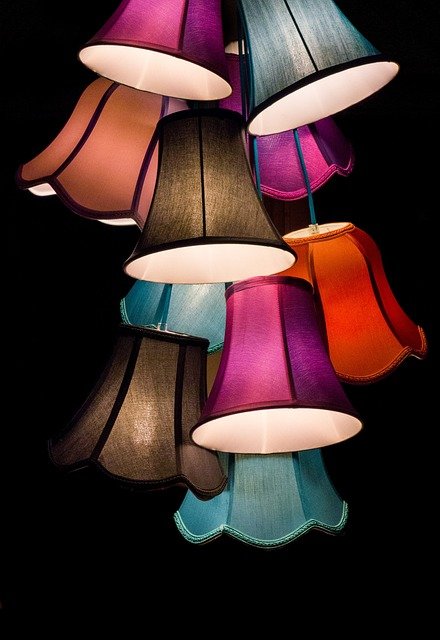Elevating Spaces: The Art of Sculptural Lighting
In the ever-evolving world of interior design, a new luminary trend is casting a captivating glow on our living spaces. Sculptural lighting, the perfect fusion of art and functionality, is revolutionizing how we illuminate and decorate our homes. This innovative approach transforms light fixtures from mere utilities into stunning focal points, redefining the ambiance and aesthetic of any room. As we delve into the intricate world of sculptural lighting, prepare to discover how these artistic marvels are reshaping our perception of home illumination and elevating interior design to new heights.

Today, sculptural lighting has evolved into a sophisticated art form, embracing cutting-edge materials, technologies, and design philosophies. Modern designers are pushing boundaries, creating pieces that not only illuminate but also serve as conversation starters and artistic centerpieces. From abstract forms inspired by nature to geometric marvels that play with shadow and light, these fixtures are redefining the role of lighting in interior spaces.
Beyond Illumination: The Multifaceted Appeal
Sculptural lighting serves a dual purpose in contemporary interiors. First and foremost, it provides essential illumination, often with adjustable or dimmable features to suit various moods and activities. But its true magic lies in its ability to transform a space even when not illuminated. These pieces act as three-dimensional art, adding depth, texture, and visual interest to rooms.
The appeal of sculptural lighting extends beyond its aesthetic value. Many designers are incorporating sustainable materials and energy-efficient LED technology, aligning with the growing demand for eco-conscious home solutions. Additionally, the versatility of these fixtures allows them to adapt to various interior styles, from minimalist to maximalist, making them a favorite among homeowners and interior designers alike.
Crafting Ambiance: The Interplay of Light and Shadow
One of the most fascinating aspects of sculptural lighting is its ability to manipulate the perception of space through the interplay of light and shadow. Designers are creating fixtures that cast intricate patterns on walls and ceilings, turning blank surfaces into dynamic canvases. This effect can dramatically alter the atmosphere of a room, creating depth and dimension where there was once only flat space.
Some designers are taking this concept further by incorporating movement into their pieces. Kinetic sculptural lights that shift and change, either through mechanical means or in response to air currents, add an element of dynamism to static interiors. These ever-changing displays of light and shadow keep spaces feeling fresh and engaging, providing a constant source of visual interest.
Material Innovation: Pushing the Boundaries
The evolution of sculptural lighting has been greatly influenced by advancements in materials science. Designers are now working with an unprecedented array of materials, each offering unique properties and aesthetics. From traditional materials like glass and metal, reimagined in new forms, to cutting-edge options like 3D-printed polymers and smart materials that change properties in response to stimuli, the possibilities seem endless.
One particularly exciting development is the use of bioplastics and recycled materials in lighting design. These eco-friendly options not only reduce environmental impact but also offer unique textures and translucencies that can’t be achieved with conventional materials. Some designers are even experimenting with living materials, incorporating plants or algae into their designs to create truly organic lighting solutions.
Integration with Smart Home Technology
As homes become increasingly connected, sculptural lighting is adapting to incorporate smart technology. Many modern fixtures can be controlled via smartphone apps or voice commands, allowing users to adjust brightness, color temperature, and even the shape or movement of the light itself. This integration of art and technology opens up new possibilities for customization and interaction with our living spaces.
Some designers are taking this a step further by creating lighting systems that respond to environmental factors or user behavior. Imagine a sculptural chandelier that slowly shifts its form throughout the day to optimize natural light distribution, or a wall-mounted piece that changes color based on the music playing in the room. These innovations blur the line between functional object and interactive art installation.
The Future of Sculptural Lighting
As we look to the future, the potential for sculptural lighting seems boundless. Emerging technologies like flexible OLEDs and advanced projection mapping are set to revolutionize what’s possible in lighting design. We may soon see fixtures that can change their physical form on command or project intricate, customizable light patterns throughout a space.
The integration of artificial intelligence could lead to lighting systems that learn and adapt to our preferences and routines, automatically adjusting to create the perfect ambiance for any situation. Additionally, as sustainability continues to be a priority, we can expect to see more designs that incorporate energy harvesting technologies, potentially making these artistic pieces entirely self-sufficient.
In conclusion, sculptural lighting represents a fascinating convergence of art, design, and technology. As it continues to evolve, it promises to transform our living spaces in ways we’re only beginning to imagine, turning every home into a dynamic, interactive gallery of light and shadow. The future of interior illumination is not just bright – it’s sculptural.





